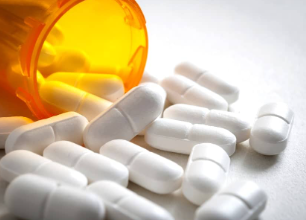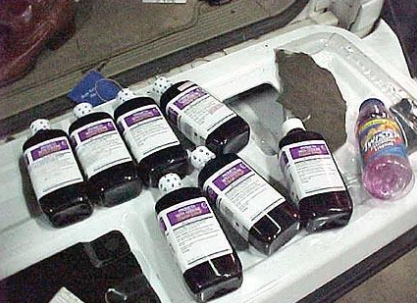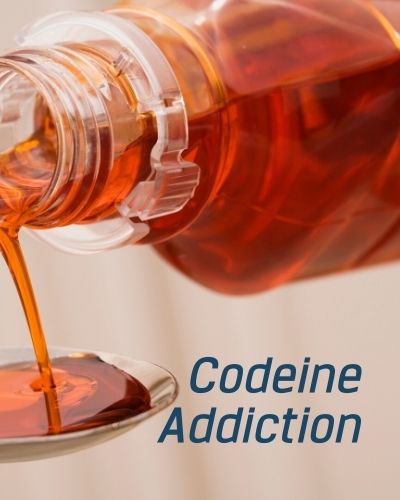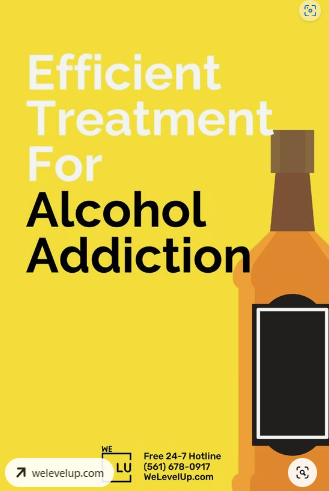Effects of Lean & The Resurgence in Abuse of ‘Purple Drank’
Lean — also known as purple lean, purple drank lean, sizzurp, dirty sprite, and lean drink—is made of a combination of prescription-strength cough medicine, soft drinks, and hard, fruit-flavored candy. The prescription cough syrups used to make lean drinks present the most risk because they often contain codeine, an opioid drug. Another active ingredient in some prescription cough syrups is promethazine, an antihistamine with potentially sedating effects that, combined with opioids, could markedly impair motor functioning.
The appearance of Lean can vary significantly in color, as some individuals substitute other ingredients to suit their personal preferences. For example, some users replace carbonated soda with juice drinks or sports drinks, while others add alcohol. Lean used in combination with other drugs can result in death.
Over the past ten years, abuse of Lean drugs has contributed to a limited number of overdose deaths. In addition, abusers blame Lean drugs and other similar mixtures for causing constipation, dental decay, urinary tract infections, and weight gain, among other lean drug effects. Is lean a drug? Prescription-strength promethazine and codeine cough syrup are legitimately used to treat allergies, bronchitis, the common cold, influenza, and sinusitis.
What is Lean drug? Other cough syrups available over the counter are sometimes mixed with alcohol and abused in the same manner as the prescription-strength cough syrup typically used for the Lean concoction. Moreover, several legal soft drinks have capitalized on the reputation of Lean the drug. Although these soft drinks do not contain controlled substances, marketing these drinks to teens and young adults may serve as a gateway to Lean drug abuse.
History of Lean
Since the 1960s, primarily in and around the Houston area, Lean purple Drank has also been prevalent in other areas of the south. The mixture enjoyed a revival in the 1990s. A 2007 music album and a song titled Purple Drank and other recordings and music videos by hip-hop and rap artists appeared to glamorize and promote the mixture.
What Are the Side Effects of Lean?
Because there is no way to know the soda-to-syrup ratio in any given serving, overdose risk is high with drug cocktails like Lean. Each ingredient is associated with various side effects.
Effects of Lean – Promethazine Concoction
What drug is in lean? Aside from codeine, promethazine is also an active ingredient in Lean. When used as prescribed, promethazine acts as an antihistamine, antiemetic (anti-vomiting), and sedative. Alone, promethazine doesn’t usually cause euphoria unless mixed with other depressants like codeine and alcohol, as in mixtures like Lean.
Promethazine affects the body’s ability to regulate alertness, inflammation, and pain control. By blocking the release of histamine, it causes deep relaxation and sleepiness. This drug increases the skin’s sensitivity to the sun and increases the risk of sunburn.
When taken in large doses, promethazine can cause:
- Abnormal heart rhythm
- Changes in blood pressure
- Dry skin and mucous membranes
- Hallucinations
- Seizures
- Severe breathing problems
Is Promethazine Addictive?
Due to its antihistamine property, many believe this drug is harmless; however, this is far from the truth. Individuals who engage in substance abuse are at risk of dependency and even overdose. Promethazine side effects due to abuse and addiction can be damaging and life-changing in the most dangerous ways possible. Substance abuse and addiction’s emotional and physical effects can take a toll on anyone. Promethazine is one of the many hazardous substances that should always be handled cautiously.
When taken by itself, this drug can cause sedation and drowsiness. When mixed with opioids like codeine, promethazine side effects can include induced sedation, pain relief, and euphoria. Someone who uses this drug becomes dependent on these promethazine side effects and may continue using them. Over some time, this can become a full-blown addiction.

Skip To:
- Effects of Lean – Resurgence in Abuse of ‘Purple Drank’
- History of Lean
- What Are the Side Effects of Lean?
- Effects of Lean – Promethazine Concoction
- Is Promethazine Addictive?
- Effects of Lean – Codeine Concoction
- Is Codeine Addictive?
- Short Term Effects of Lean
- Long Term Effects of Lean
- How Long Do the Effects of Lean Last?
- How Long Does Lean Stay in Your System?
- Effects Of Lean Abuse
- Health Effects of Lean
- Is Lean Dangerous to Drink?
- Dual Diagnosis Treatment for Polysubstance Abuse
Learn More:
Effects of Lean-Codeine Concoction
Codeine is a prescription pain medication used to treat mild to moderate pain. It comes in tablet form and is the main ingredient in prescription-grade cough suppressants. Codeine and alcohol have become increasingly popular trends towards increasing the level of intoxication a person experiences. This is extremely dangerous as the mixture intensifies the effects of the other, increasing the risk of overdose and long-term health damage.
What drug is lean? Codeine is the active ingredient of Lean. Codeine is a drug that is metabolized by the body into morphine. In prescription cough syrup, codeine works to suppress a cough. Morphine and other opioids can also cause feelings of joy, analgesia, and euphoria, as well as dangerous side effects, including:
- Brain damage
- Dizziness
- Redness of the arms, face, neck, and upper chest
- Shortness of breath
- Stopping the heart
Is Codeine Addictive?
What type of drug is lean? Codeine cough syrups can still produce significant psychoactive effects that can produce addiction. Codeine is not only addictive as a mild opioid, but it can also generate hazardous effects along with life-threatening symptoms. The results of short-term use can compel someone to take larger doses of the drug.
Codeine also has the potential to be highly addictive. Over time, an individual drinking lean will need to drink more and more to get the same feeling or even to feel normal. This is known as tolerance. A tolerance to Codeine is one of the primary signs of addiction. In recommended doses, Codeine cough syrup is safe to use. However, excessive Codeine in lean (up to 25 times the recommended dose) can lead to brain or bodily damage and overdose.
Get Help. Get Better. Get Your Life Back.
Searching for Accredited Drug & Alcohol Rehab Centers Near You? Or Mental Health Support?
Even if you have failed previously, relapsed, or are in a difficult crisis, we stand ready to support you. Our trusted behavioral health specialists will not give up on you. Call us when you feel ready or want someone to speak to about therapy alternatives to change your life. Even if we cannot assist you, we will lead you wherever you can get support. There is no obligation. Call our hotline today.
FREE Addiction Hotline – Call 24/7Lean Addiction Statistics
In 2016, codeine phosphate with pseudoephedrine and guaifenesin was the 241st most prescribed medication in the United States, with more than two million prescriptions. Additionally, a study found that prescriptions for Tylenol, which combines codeine with acetaminophen, increased by nearly 600% as medical professionals looked for alternatives to more potent narcotics. According to the 2016 National Survey on Drug Use and Health, 11.8 million U.S. residents aged 12 or older — or 4.4% of the population — were current users of prescription opioids like codeine.
33 million
An estimated 33 million people use Codeine every year.
Source: NIDA
500,000
Almost 500,000 Americans fatally overdosed on Opioids, like Codeine, from 1999 to 2019.
Source: NIDA
48 to 72 hours
This is typically when, after quitting Codeine, withdrawal symptoms are at their height.
Source: NIDA
Codeine Drug Facts
Codeine
Codeine sulfate is an opioid analgesic indicated for the relief of mild to moderately severe pain where the use of an opioid analgesic is appropriate.
FDA WARNING: Death Related To Ultra-Rapid Metabolism of Codeine to Morphine
Respiratory depression and death have occurred in children who received codeine following tonsillectomy and/or adenoidectomy and had
evidence of being ultra-rapid metabolizers of codeine due to a CYP2D6 polymorphism.
Indications and Usage
Usual adult dosage: 15 to 60 mg up to every 4 hours as needed.
Doses above 60 mg may fail to give commensurate pain relief and may be
associated with an increased incidence of undesirable side effects.
Warnings and Precautions
- Risk of death in ultra-rapid metabolizers: Conversion of codeine into its active metabolite, morphine, may occur more rapidly and completely resulting in higher-than-expected morphine levels and respiratory depression or death.
- Respiratory depression: Increased risk in elderly, debilitated patients, those suffering from conditions accompanied by hypoxia, hypercapnia, or upper airway obstruction.
- Controlled substance: Codeine sulfate is a Schedule II controlled substance with an abuse liability similar to other opioids.
- CNS effects: Additive CNS depressive effects, including respiratory depression, hypotension, profound sedation, coma, or death when used in conjunction with alcohol, other opioids, or illicit drugs.
Short Term Effects of Lean
Drinking Lean provides an easily accessible high.
Alcohol is only available to adults ages 21 and older. Although teens can usually still find an older friend to purchase beer or liquor, it’s easier to use substances they can buy themselves. Low-strength codeine is available as an over-the-counter medicine in most pharmacies. You might still need to be 18 to buy it, but the lower age limit makes it accessible to more young people.
The effects of lean seem to “slow down” the world around you.
The active ingredients in cough syrup slow your body’s central nervous system (CNS). This makes the things around you seem to slow down as well. In reality, nothing changes, but the cough syrup affects your perception and reaction times.
The effects of drinking Lean “takes the edge off.”
One of the most appealing effects of lean is that it takes the edge off. It softens things and makes it seem easier to get by. As people become hooked on this feeling, they become dependent upon the effects of lean to feel normal.
Cough syrup gives users feelings of euphoria.
Drinking more than the recommended dosage of cough syrup provides feelings of euphoria. This lighthearted, exciting feeling makes lean enticing at first. But, as users develop a dependence, it becomes more difficult to stop using it.
The effects of drinking Lean make users, almost literally, lean.
Lean gets its name from the droopy, slow sense that washes over those who drink it. Some users refer to drinking cough syrup as being “on the lean” because of the loss of balance and overall impacted coordination.
Ultimately, codeine is an opioid medication.
If the cough syrup used to make the Lean contains codeine, the Lean concoction is an opioid. This means that lean’s effects are similar to those of other opioids, such as prescription painkillers. Cough syrup is sometimes more accessible, making it another alternative to pills.


Long Term Effects of Lean
Frustration, agitation, or difficulties controlling anger.
After relying on the effects of lean-to feel good, especially for months or years, living sober is challenging. When you can’t access cough syrup, you might feel frustrated or irritated or even quick to anger.
The effects of lean may lead to memory problems.
Like other hard drugs, overusing codeine or DXM cough syrup leads to memory problems. This is often due to “blackouts” from using too much or mixing it with alcohol or other drugs. Lean will also lead to difficulties remembering things when used for a long period of time.
Lean may cause dental decay.
The sugary concoction of cough syrup, soda, and candy may cause tooth decay. If you don’t regularly take care of your teeth, the carbonation and sugar will wreak havoc on your oral health.
Low blood pressure.
Cough syrup’s effects on the central nervous system also lead to low blood pressure. If left unchecked, this can lead to lasting, long-term effects on your health.
Codeine causes difficulty breathing.
The combination of codeine and promethazine affects your ability to breathe. The opioids in codeine slow your breathing and may lead to a respiratory arrest in worst-case scenarios.
The effects of lean may cause coma or death.
Drinking too much cough syrup, codeine specifically, may lead to coma or death. Whether from respiratory arrest or the overall havoc it wreaks on your body, the effects of lean may be deadly. For example, the notorious Houston DJ, DJ Screw, died of a heart attack caused by an overdose of codeine in 2000. He was soon followed by two others, Big Moe and Pimp C, who died of similar causes.

Get Your Life Back
Find Hope & Recovery. Get Safe Comfortable Detox, Addiction Rehab & Mental Health Dual Diagnosis High-Quality Care at the We Level Up Treatment Centers Network.
Hotline (877) 378-4154How Long Do The Effects of Lean Last?
Since lean is used orally, the substance is processed through the digestive tract, and most drugs are eliminated via the kidneys. The half-life of codeine (the active ingredient of lean)—the amount of time that it takes the body to reduce the amount of the drug in half due to normal metabolism—ranges from 2.5 to 4 hours for most individuals. This means that codeine is eliminated relatively quickly for most individuals.
Some factors can affect the elimination of the substance and the detectability of codeine in an individual’s system, including:
- How much of the drug has been taken.
- The person’s gender, age, and overall health.
- Use of codeine with other drugs (e.g., alcohol, which would be metabolized before codeine).
- Individual differences in metabolism.
How Long Does Lean Stay in Your System?
What is the drug Lean? Lean is consumed in particularly large amounts, and the psychoactive effects of the prescription cough medicine are the primary motivation for using the drug. Most cough medicines used in lean contain codeine, an opiate drug, as a primary ingredient. Codeine (3methylmorphine) is a controlled substance classified by the United States Drug Enforcement Administration (DEA) and can only be obtained legally with a written prescription from a doctor.
Does lean show up on a drug test? The detectability of codeine in a person’s system depends on the factors listed above. It also depends on the mode of detection.
- Under most normal circumstances, codeine is detectable in a person’s urine for 1–2 days.
- Saliva tests can detect codeine relatively quickly after its use and for as long as 1–2 days following discontinuation.
- Codeine is typically detectable in a person’s blood for 24 hours. After this, it may not be detectable at all using a blood test.
- Testing hair follicles for codeine is probably the best method to detect past codeine use. This method may detect the presence of codeine in a person’s system 90 days after use.
Does lean show up in a drug test? It is important to note that the amount and frequency of use of codeine can affect the time the drug remains in a person’s system. Some people may find that they test positive for drugs like codeine beyond the limits mentioned in this article. As with any drug, there aren’t finite windows since personal factors affect variability significantly.
First-class Facilities & Amenities
World-class High-Quality Addiction & Mental Health Rehabilitation Treatment
Rehab Centers TourRenowned Addiction Centers. Serene Private Facilities. Inpatient rehab programs vary.
Addiction Helpline (877) 378-4154Proven recovery success experience, backed by a Team w/ History of:
15+
Years of Unified Experience
100s
5-Star Reviews Across Our Centers
10K
Recovery Success Stories Across Our Network
- Low Patient to Therapist Ratio
- Onsite Medical Detox Center
- Comprehensive Dual-Diagnosis Treatment
- Complimentary Family & Alumni Programs
- Coaching, Recovery & Personal Development Events
Effects Of Lean Abuse
What is Lean the drug? Lean is so named because of its effect on people who drink it — they tend to slouch or lean to one side the more they consume the mixture. The effects of Codeine are similar to those of other addictive Opioids (such as Oxycodone and Percocet). Typically, its effects kick in within 30 to 45 minutes, though differing amounts of Codeine in Lean (sometimes up to 25 times the recommended dose) can shorten onset times. The peak effects begin 1 to 2 hours after ingestion and last about 4 to 6 hours. Knowing how to make lean purple drank is risky as it can lead to poisoning and overdose.
Health Effects of Lean
Despite its glorification in pop culture, drinking this mixture comes with a host of adverse effects of lean:
- Dizziness
- Slowed heart rate
- Slowed breathing
- Constipation
- Dental decay
- Weight gain
- Urinary tract infections
- Impaired vision
- Memory loss
- Hallucinations
- Seizures (in at-risk individuals)

World-class, Accredited, 5-Star Reviewed, Effective Addiction & Mental Health Programs. Complete Behavioral Health Inpatient Rehab, Detox plus Co-occuring Disorders Therapy.
CALL (877) 378-4154End the Addiction Pain. End the Emotional Rollercoaster. Get Your Life Back. Start Drug, Alcohol & Dual Diagnosis Mental Health Treatment Now. Get Free No-obligation Guidance by Substance Abuse Specialists Who Understand Addiction & Mental Health Recovery & Know How to Help.

Is Lean Dangerous to Drink?
Many Lean users underestimate the dangers of drinking Codeine. Abusing any substance is dangerous to one’s health, but Opioids are of particular concern because of the high risk of developing a tolerance and, eventually, addiction.
As tolerance to Lean builds, the system produces less and less of its natural Opioids until it is entirely dependent on the foreign substance. This dependency compels the individual to consume more and more of the drug to get the same feeling or, in most cases, to feel normal.
The abuse of opioids like Lean can also lead to life-threatening health complications and even fatal overdose. Upon consuming too much Lean, the brain is flooded with Opioid molecules and becomes unable to regulate its response or mitigate their effect.
The highly addictive nature of opioids is due, in part, to their rewarding, euphoric effects. Opioids should only be used in a therapeutic context under the direction of a physician and should only be taken as prescribed to mitigate some of this addictive potential.
Chronic use of opioids, such as the codeine found in purple drank, can lead to the development of drug tolerance and dependence. As tolerance mounts, people may need to consume increasing amounts of the drug to experience the desired effects.
This ramping up of drug-taking behavior can drive the development of significant physiological dependence. Opioid-dependent people are likely to experience a range of unpleasant withdrawal symptoms should they go without the substance for too long.
Experience Transformative Recovery at the We Level Up Treatment Center.
See our authentic success stories. Get inspired. Get the help you deserve.



Start a New Life
Begin with a free call to an addiction & behavioral health treatment advisor. Learn more about our dual-diagnosis programs. The We Level Up treatment center network delivers various recovery programs at each treatment facility. Call to learn more.
- Personalized Care
- Caring Accountable Staff
- World-class Amenities
- Licensed & Accredited
- Renowned w/ 5-Star Reviews
We’ll Call You
Dual Diagnosis Treatment for Polysubstance Abuse
Alcohol is the most addictive substance in America, as more than 17 million people in the United States are considered to suffer from addiction to alcohol. The Substance Abuse and Mental Health Service Administration (SAMHSA), publishes that over 1.5 million American adults are considered to be currently abusing a prescription drug.
Now that we answered the question, “what is lean purple drank?” it is crucial to realize that mixing codeine and alcohol can lead to addiction and dangerous side effects, including a greater risk of overdose. People with a history of problem drinking and alcohol dependence will need to inform their doctor about these problems. In addition, these individuals must get help from a qualified addiction rehabilitation center.
To determine the most effective ways to treat alcohol addiction, it’s crucial first to get an accurate assessment of all the symptoms. When a mental health professional has evaluated the symptoms, it may be determined that another form of mental condition is present and needs a particular treatment. Very often, some combination of psychotherapy, medication, and lifestyle changes are effective for coping with functional.
Medically Assisted Detox
Medical detox is often considered the first stage of treatment. It will help you navigate the complicated process of alcohol withdrawal, but it doesn’t address patterns of thought and behavior that contribute to drug use. Various treatment approaches and settings can help provide the ongoing support necessary to maintain long-term sobriety after you complete detox.
Cravings are very common during detox and can be challenging to overcome. This often leads to relapse. Constant medical care provided during inpatient drug and alcohol rehab helps prevent relapse. Clinicians can provide the necessary medication and medical expertise to lessen cravings and the effects of withdrawals.
Psychotherapy
Several different modalities of psychotherapy have been used in the treatment of mental health disorders along with addiction, including:
- Cognitive Behavioral Therapy (CBT) – is an effective treatment that involves changing both the patterns of negative thoughts and the behavioral routines which are affecting the daily life of the depressed person for various forms of depression.
- Dialectical Behavioral Therapy (DBT) – is a comprehensive mental health and substance abuse treatment program whose ultimate goal is to aid patients in their efforts to build a life worth living. The main goal of DBT is to help a person develop what is referred to as a “clear mind.”
Dual Diagnosis Treatment
Drug abuse and mental health disorders often co-occur. In many cases, traumatic experiences can result in a mental health disorders and substance abuse. Dual-diagnosis rehabilitation treats both of these issues together. The best approach for the treatment of dual diagnosis is an integrated system. This strategy treats both the substance abuse problem and the mental disorder simultaneously. Regardless of which diagnosis (mental health or substance abuse problem) came first, long-term recovery will depend largely on the treatment for both disorders done by the same team or provider.
Medication-Assisted Treatments
Medication-Assisted Treatments (MAT) for substance use and mental health disorders are commonly used in conjunction with one another. This includes the use of medications and other medical procedures. During your rehab, the staff from your treatment facility will help you identify what caused your addiction and teach you skills that will help you change your behavior patterns and challenge the negative thoughts that led to your addiction. Sometimes, the pressures and problems in your life lead you to rely on substances to help you forget about them momentarily.
If an alcoholic decides to stop drinking, they may alcohol experience withdrawal effects such as anxiety, restlessness, insomnia, and tremors. The development of tolerance and withdrawal are indications of addiction. If you or a loved one are struggling with long-term codeine and alcohol abuse and a co-occurring mental health condition such as depression, contact one of our helpful treatment specialists today. We Level Up NJ can provide information on dual diagnosis and detox programs that may fit your needs.

Search We Level Up “Effects of Lean & The Resurgence in Abuse of ‘Purple Drank’” Topics & Resources
Sources
[1] Codeine: MedlinePlus Drug Information
[2] Codeine – StatPearls – NCBI Bookshelf (nih.gov)
[3] Top Effective Codeine Addiction Treatment (welevelup.com)
[4] Alcohol use disorder: pathophysiology, effects, and pharmacologic options for treatment – PMC (nih.g ov)
[6] Over-the-Counter Medicines DrugFacts | National Institute on Drug Abuse (NIDA) (nih.gov)
[7] Purple Drank (justice.gov)
[8] What Happens If You Mix Codeine and Alcohol? Effective Treatment Options (welevelup.com)
[9] DailyMed – CODEINE SULFATE tablet (nih.gov)
[10] Abuse of codeine-containing cough syrups: a report from India – PubMed (nih.gov)